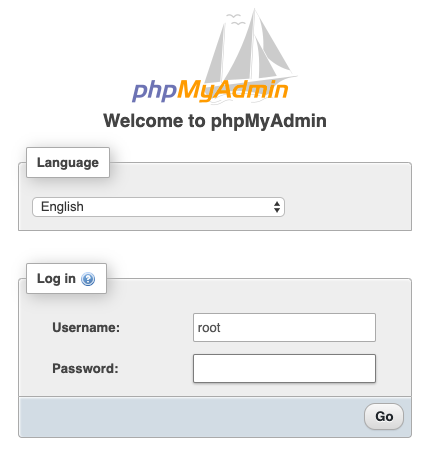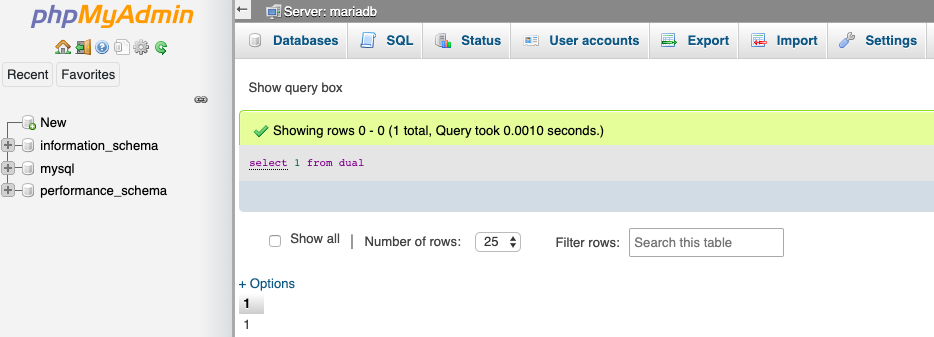This blog entry is part of the series of blogs to productionise a docker image in Kubernetes for enterprises. In our previous article, we saw a quick way of deploying Docker images to Kubernetes using imperative commands. In this entry, we will see a way of managing kubernetes objects in a minikube cluster using YMAL/JSON config files.
Minikube is a tool that runs a single-node Kubernetes cluster in a virtual machine on your personal computer. Deploying it in Minikube normally means you will be able to deploy your Docker images in most other versions of Kubernetes without many modifications.
For the sake of simplicity, we shall pick a couple of docker images from open libraries.
- Mariadb is a community-developed fork of MySQL DB intended to remain free under the GNU GPL
- PhpMyAdmin A web interface for MySQL and MariaDB administration.
This is a quick way of a simulating an application stack with a 2-tier based web architecture and orchestration of multiple docker containers.
Deploying using YAML/JSON
Keeping the configurations for objects in files enables easy CI/CD and easy replication across environments with source control. A detailed explanation of different ways of creating Kubernetes resources and their pros/cons is available here.
Start a quick single-node cluster
minikube start
Login to Docker
docker login
A Kubernetes Pod is a group of one or more Containers, tied together for the purposes of administration and networking.
A Kubernetes Deployment checks on the health of your Pod and restarts the Pod’s Container if it terminates. Deployments are the recommended way to manage the creation and scaling of Pods.
For the benefit of our exercise, we will stick to the model of one container per pod.
Deploy Mariadb
Create a secret for storing the password for MariaDB root user. Kubernetes Secrets let you store and manage sensitive information, such as passwords, OAuth tokens, and ssh keys. Storing confidential information in a Secret is safer and more flexible than putting it verbatim in a Pod definition or in a container image.
kubectl create secret generic mariadb-secret --from-literal=root_pwd=changeit
Create deployment.yaml
apiVersion: apps/v1
kind: Deployment
metadata:
name: mariadb
spec:
selector:
matchLabels:
app: mariadb
template:
metadata:
labels:
app: mariadb
spec:
containers:
- env:
- name: MYSQL_ROOT_PASSWORD
valueFrom:
secretKeyRef:
name: mariadb-secret
key: root_pwd
name: mariadb
image: docker.io/mariadb:latest
ports:
- containerPort: 3306
Create deployment using the above deployment.yaml
kubectl apply -f deployment.yaml
Get pod name for mariadb from the list of running pods
kubectl get pods NAME READY STATUS RESTARTS AGE mariadb-7bb67dd9fc-8kjpm 1/1 Running 0 14h
To make the mariadb Container accessible from outside the Kubernetes virtual network, you have to expose the Pod as a Kubernetes Service. Create mariadb service of type “ClusterIP” on top of deployment so its only accessible within the cluster in port 3306.
Create service.yaml
apiVersion: v1
kind: Service
metadata:
labels:
app: mariadb
name: mariadb
spec:
ports:
- name: tcp-3306
port: 3306
targetPort: 3306
selector:
app: mariadb
Expose mariadb service using above service.yaml
kubectl apply -f service.yaml
Check the list of services running to see if mariadb is exposed on this port
kubectl get svc NAME TYPE CLUSTER-IP EXTERNAL-IP PORT(S) AGE mariadb ClusterIP 10.99.151.240 3306/TCP 13h
Deploy PhpMyAdmin
A ConfigMap is an API object used to store non-confidential data in key-value pairs. Pods can consume ConfigMaps as environment variables, command-line arguments, or as configuration files in a volume. A ConfigMap allows you to decouple environment-specific configuration from your container images, so that your applications are easily portable. We will store the database host name property in a config map.
Create configmap.yaml
apiVersion: v1 kind: ConfigMap metadata: name: phpmyadmin-config data: # property-like keys; each key maps to a simple value root_pwd: "mariadb"
Create the configmap
kubectl apply -f configmap.yaml
Create deployment.yaml
apiVersion: apps/v1
kind: Deployment
metadata:
name: phpmyadmin
spec:
selector:
matchLabels:
app: phpmyadmin
template:
metadata:
labels:
app: phpmyadmin
spec:
containers:
- env:
- name: MYSQL_ROOT_PASSWORD
valueFrom:
secretKeyRef:
name: mariadb-secret
key: root_pwd
- name: PMA_HOST
valueFrom:
configMapKeyRef:
name: phpmyadmin-config
key: root_pwd
name: phpmyadmin
image: docker.io/phpmyadmin/phpmyadmin:latest
ports:
- containerPort: 80
Get pod name for phpmyadmin from the list of running pods
kubectl get pods NAME READY STATUS RESTARTS AGE mariadb-7bb67dd9fc-8kjpm 1/1 Running 0 14h phpmyadmin-7559f85f5b-ppjwk 1/1 Running 0 13h
Expose phpmyadmin as a service for the pod port 80 to be accessible from external world in port 80, keep the service type To “LoadBalancer”.
Create service.yaml
apiVersion: v1
kind: Service
metadata:
labels:
app: phpmyadmin
name: phpmyadmin
spec:
ports:
- name: http-80
port: 8080
targetPort: 80
selector:
app: phpmyadmin
type: LoadBalancer
Expose phpmyadmin service using above service.yaml
kubectl apply -f service.yaml
Check the list of services running to see if phpmyadmin and mariadb are exposed as services
kubectl get svc NAME TYPE CLUSTER-IP EXTERNAL-IP PORT(S) AGE kubernetes ClusterIP 10.96.0.1 443/TCP 34d mariadb ClusterIP 10.99.151.240 3306/TCP 14h phpmyadmin LoadBalancer 10.105.202.36 80:31779/TCP 13h
View the phpmyadmin service in browser using the below command
minikube service phpmyadmin

Login using ‘root’ as Username and ‘changeit’ as password. Click on the SQL tab and execute a sample query “select 1 from dual”, hit “Go” button to see results(as below). Also, this will prove end to end connectivity.

Delete the resources
kubectl delete deployment phpmyadmin kubectl delete deployment mariadb kubectl delete svc mariadb kubectl delete svc phpmyadmin kubectl delete secret mariadb-secret kubectl delete configmap phpmyadmin-config
This is a quick way of getting your docker images deployed into Kubernetes. Many organisations tend to keep resource creation via YAML/JSONs and use for automation. With these YAML files in place, We will see the declarative deployments of these files in our next article.
